Ruth Bader Ginsburg: Obituary of the Supreme Court justice
- Published
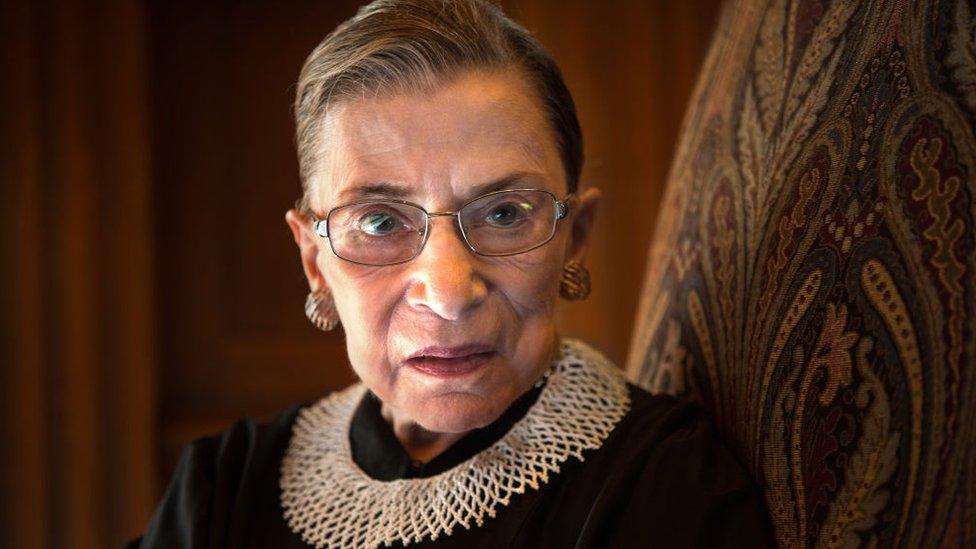
US Supreme Court Justice Ruth Bader Ginsburg, the history-making jurist, feminist icon and national treasure, has died, aged 87.
Ginsburg became only the second woman ever to serve as a justice on the nation's highest court.
She struggled against blatant sexism throughout her career as she climbed to the pinnacle of her profession.
A lifelong advocate of gender equality, she was fond of joking that there would be enough women on the nine-seat Supreme Court "when there are nine".
She did not let up in her twilight years, remaining a scathing dissenter on a conservative-tilting bench, even while her periodic health scares left liberal America on edge.
Despite maintaining a modest public profile, like most top judges, Ginsburg inadvertently became not just a celebrity, but a pop-culture heroine.
She may have stood an impish 5ft, but Ginsburg will be remembered as a legal colossus.
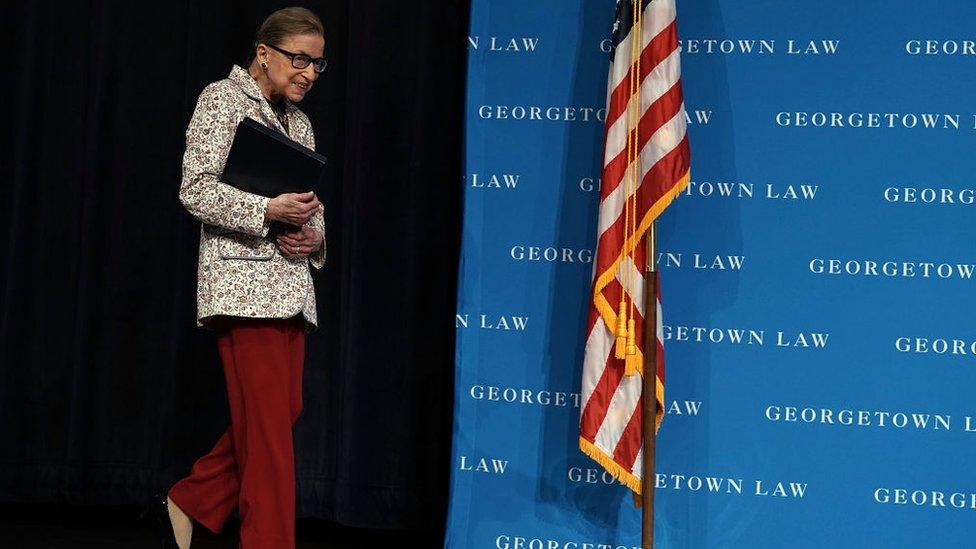
Modest beginnings
She was born to Jewish immigrant parents in the Flatbush neighbourhood of Brooklyn, New York City, in 1933 at the height of the Great Depression. Her mother, Celia Bader, died of cancer the day before Ginsburg left high school.
She attended Cornell University, where she met Martin "Marty" Ginsburg on a blind date, kindling a romance that spanned almost six decades until his death in 2010.
Justice Ruth Bader Ginsburg remembered
"Meeting Marty was by far the most fortunate thing that ever happened to me," Ginsburg once said, adding that the man who would become her husband "was the first boy I ever knew who cared that I had a brain".
The couple married shortly after Ginsburg's graduation in 1954 and they had a daughter, Jane, the following year. While she was pregnant, Ginsburg was demoted in her job at a social security office - discrimination against pregnant women was still legal in the 1950s. The experience led her to conceal her second pregnancy before she gave birth to her son, James, in 1965.
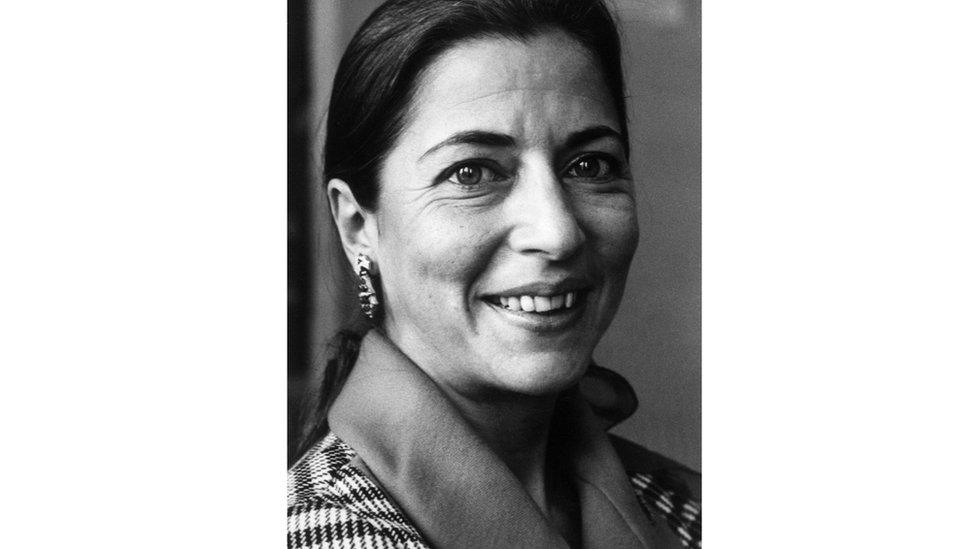
Ginsburg in 1977
In 1956, Ginsburg became one of nine women accepted to Harvard Law School, out of a class of about 500, where the dean famously asked that his female students tell him how they could justify taking the place of a man at his school.
When Marty, also a Harvard Law alumnus, took a job as a tax lawyer in New York, Ginsburg transferred to Columbia Law School to complete her third and final year, becoming the first woman to work at both colleges' law reviews.
'Teacher' to male justices
Despite finishing top of her class, Ginsburg did not receive a single job offer after graduation.
"Not a law firm in the entire city of New York would employ me," she later said. "I struck out on three grounds: I was Jewish, a woman and a mother."
She wound up on a project studying civil procedure in Sweden before becoming a professor at Rutgers Law School, where she taught some of the first classes on women and the law.
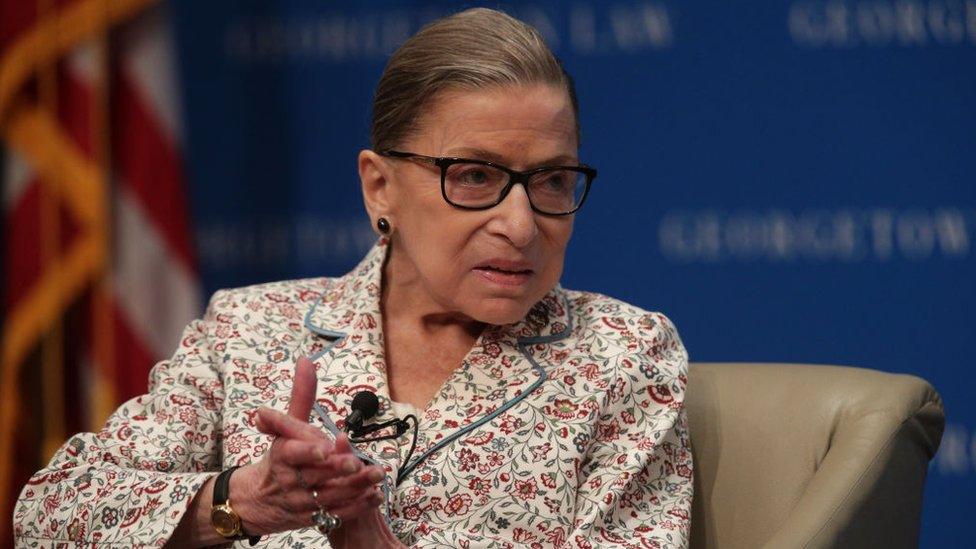
"The women's movement came alive at the end of the 60s," she said to NPR. "There I was, a law school professor with time that I could devote to moving along this change."
In 1971, Ginsburg made her first successful argument before the Supreme Court, when she filed the lead brief in Reed v Reed, which examined whether men could be automatically preferred over women as estate executors.
"In very recent years, a new appreciation of women's place has been generated in the United States," the brief states. "Activated by feminists of both sexes, courts and legislatures have begun to recognise the claim of women to full membership in the class 'persons' entitled to due process guarantees of life and liberty and the equal protection of the laws."
The court agreed with Ginsburg, marking the first time the Supreme Court had struck down a law because of gender-based discrimination.
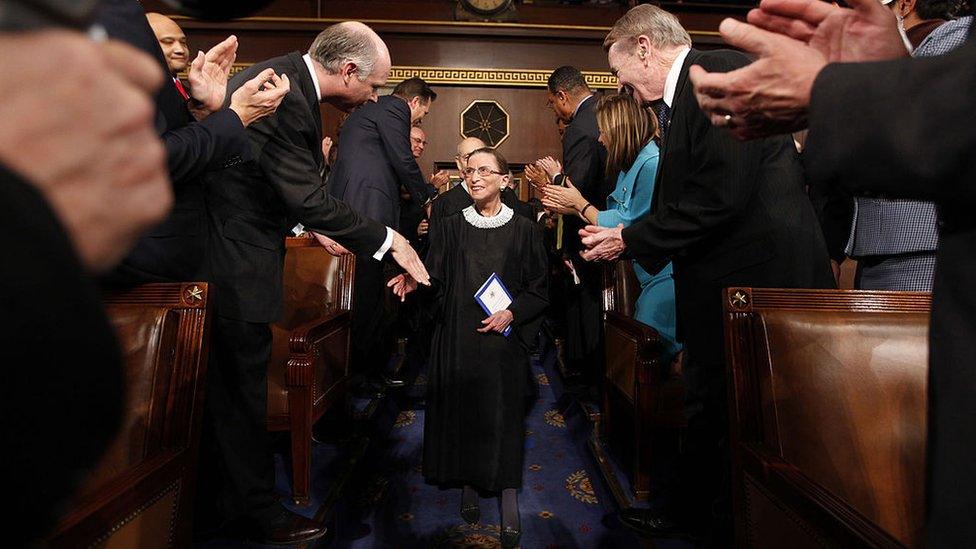
In 1972, Ginsburg co-founded the Women's Rights Project at the American Civil Liberties Union (ACLU). That same year, Ginsburg became the first tenured female professor at Columbia Law School.
She was soon the ACLU's general counsel, launching a series of gender-discrimination cases. Six of these brought her before the Supreme Court, five of which she won.
She compared her role to that of a "kindergarten teacher", explaining gender discrimination to the all-male justices.
Her approach was cautious and highly strategic. She favoured incrementalism, thinking it wise to dismantle sexist laws and policies one by one, rather than run the risk of asking the Supreme Court to outlaw all rules that treat men and women unequally.
Cognisant of her exclusively male audience on the court, Ginsburg's clients were often men. In 1975, she argued the case of a young widower who was denied benefits after his wife died in childbirth.
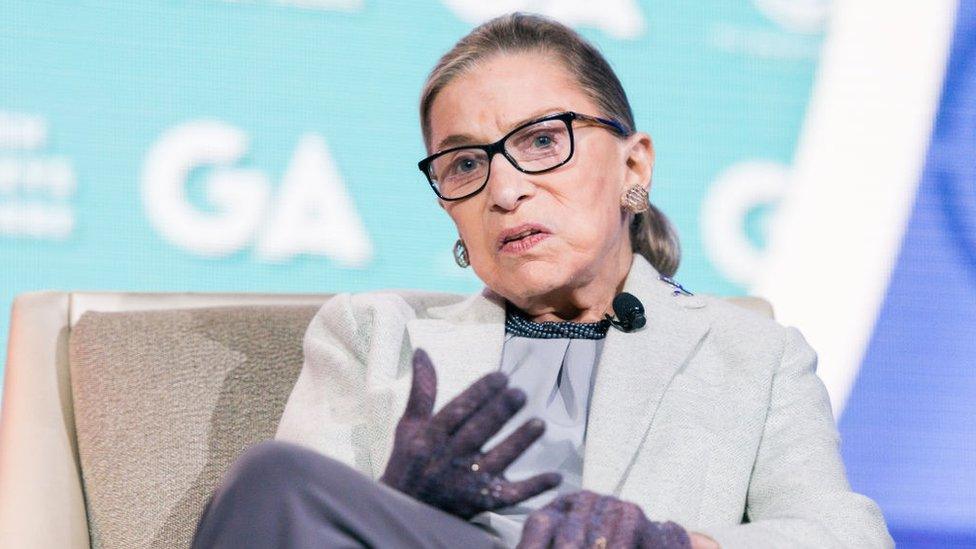
"His case was the perfect example of how gender-based discrimination hurts everyone," Ginsburg said.
She later said leading the legal side of the women's movement during this period - decades before joining the Supreme Court - counted as her greatest professional work.
"I had the good fortune to be alive in the 1960s, then, and continuing through the 1970s," she said. "For the first time in history it became possible to urge before the courts successfully that equal justice under law requires all arms of government to regard women as persons equal in stature to men."
In 1980, Ginsburg was nominated to the United States Court of Appeals for the District of Columbia as part of President Jimmy Carter's efforts to diversify federal courts.
Though Ginsburg was often portrayed as a liberal firebrand, her days on the appeals court were marked by moderation.
She earned a reputation as a centrist, voting with conservatives many times and against, for example, re-hearing the discrimination case of a sailor who said he had been discharged from the US Navy for being gay.
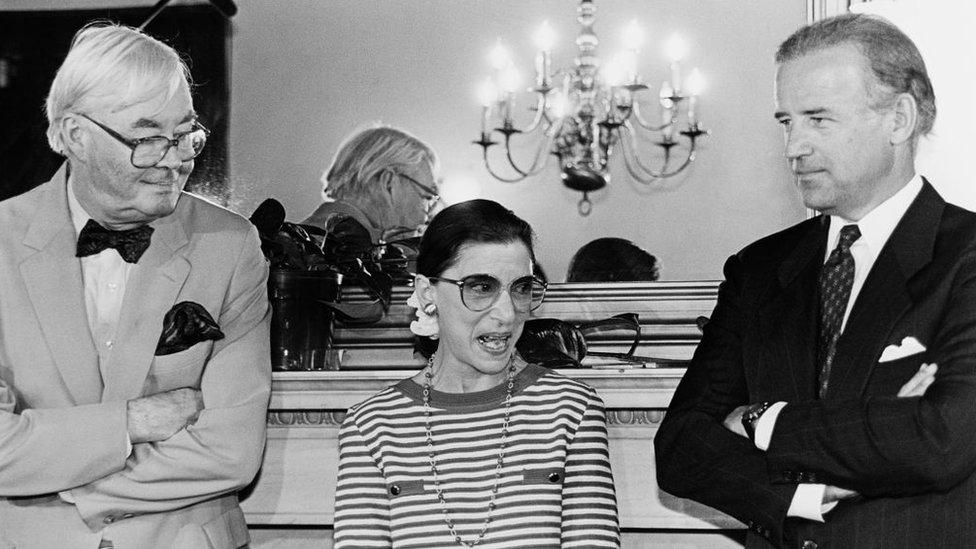
Ginsburg with Senators Daniel Moynihan (left) and Joe Biden in 1993
She was nominated to the Supreme Court in 1993 by President Bill Clinton after a lengthy search process. Ginsburg was the second woman ever confirmed to that bench, following Sandra Day O'Connor, who was nominated by President Ronald Reagan in 1981.
Among Ginsburg's most significant, early cases was United States v Virginia, which struck down the men-only admissions policy at the Virginia Military Institute.
While Virginia "serves the state's sons, it makes no provision whatever for her daughters. That is not equal protection", Ginsburg wrote for the court's majority. No law or policy should deny women "full citizenship stature - equal opportunity to aspire, achieve, participate in and contribute to society based on their individual talents and capacities."

Ginsburg at her Senate confirmation hearing
During her time on the bench, Justice Ginsburg moved noticeably to the left. She served as a counterbalance to the court itself, which, with the appointment of Neil Gorsuch and Brett Kavanaugh by President Donald Trump, slanted in favour of conservative justices.
Her dissents were forceful - occasionally biting - and Ginsburg did not shy away from criticising her colleagues' opinions.
In 2013, objecting to the court's decision to strike down a significant portion of the Voting Rights Act of 1965 by a 5-to-4 vote, Ginsburg wrote: "The Court's opinion can hardly be described as an exemplar of restrained and moderate decision making."
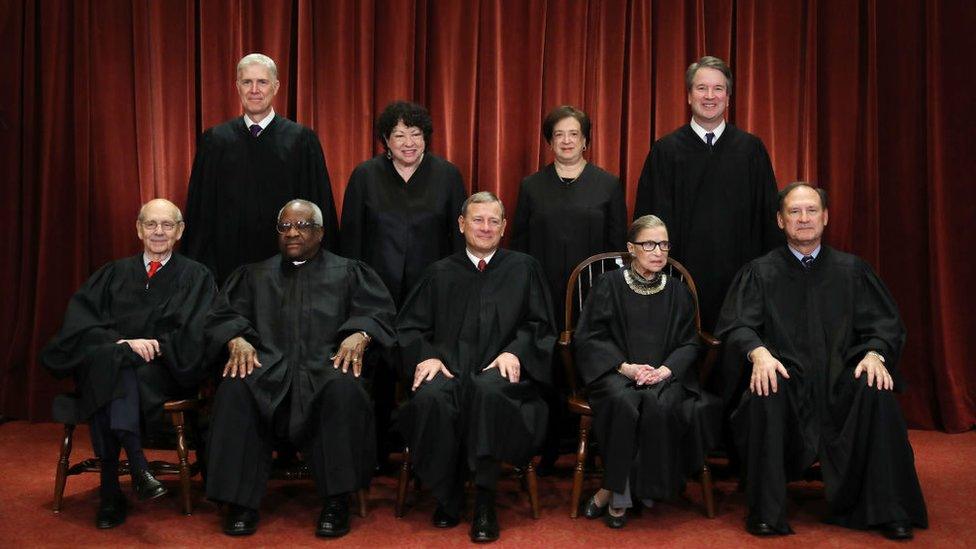
The US Supreme Court justices pose for their official portrait in November 2018
In 2015, Ginsburg sided with the majority on two landmark cases - both massive victories for American progressives. She was one of six justices to uphold a crucial component of the 2010 Affordable Care Act, commonly known as Obamacare. In the second, Obergefell v Hodges, she sided with the 5-4 majority, legalising same-sex marriage in all 50 states.
'Best friend and biggest booster'
As Ginsburg's legal career soared, her personal life was anchored by marriage to Marty.
Their relationship reflected a gender parity that was ahead of its time. The couple shared the childcare and housework, and Marty did virtually all of the cooking.
"I learned very early on in our marriage that Ruth was a fairly terrible cook and, for lack of interest, unlikely to improve," he said in a 1996 speech.
Professionally, Marty was a relentless champion of his wife. Clinton officials said it was his tireless lobbying that brought Ginsburg's name to the shortlist of potential Supreme Court nominees in 1993.
He reportedly told a friend that the most important thing he did in his own life "is to enable Ruth to do what she has done".
After her confirmation, Ginsburg thanked Marty, "who has been, since our teenage years, my best friend and biggest booster".
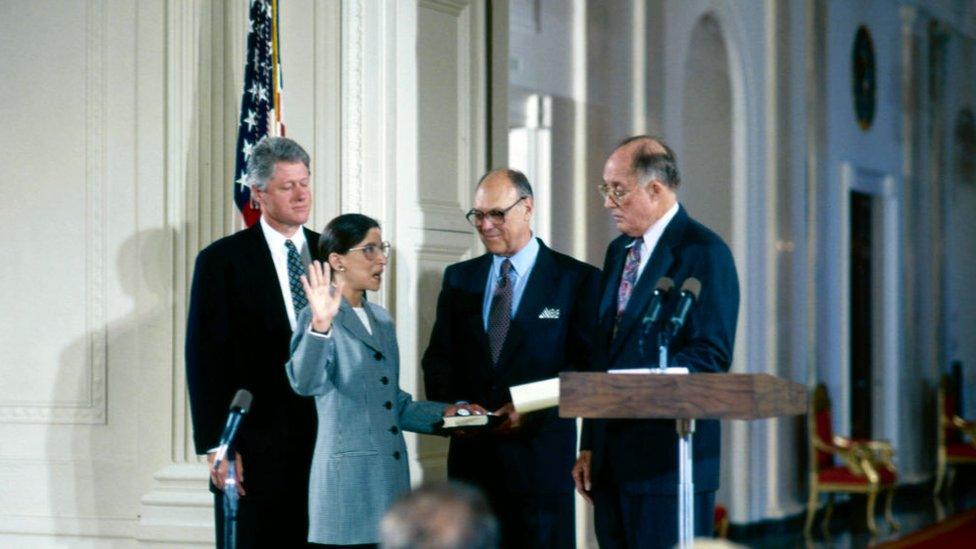
Marty Ginsburg holds the Bible for his wife as she is sworn in as Supreme Court Justice
In his final weeks, facing his own battle with cancer, Marty wrote a letter to his wife saying that other than parents and kids, "you are the only person I have loved in my life.
"I have admired and loved you almost since the day we first met at Cornell."
He died in June 2010 after 56 years of marriage.
The next morning Ginsburg was on the bench at the Supreme Court to read an opinion on the final day of the term "because [Marty] would have wanted it", she later told the New Yorker magazine.
'I will live'
Ginsburg had five major run-ins with cancer herself.
Justice O'Connor, who had breast cancer in the 1980s, was said to have suggested that Ginsburg schedule chemotherapy for Fridays so she could use the weekend to recover for oral arguments.
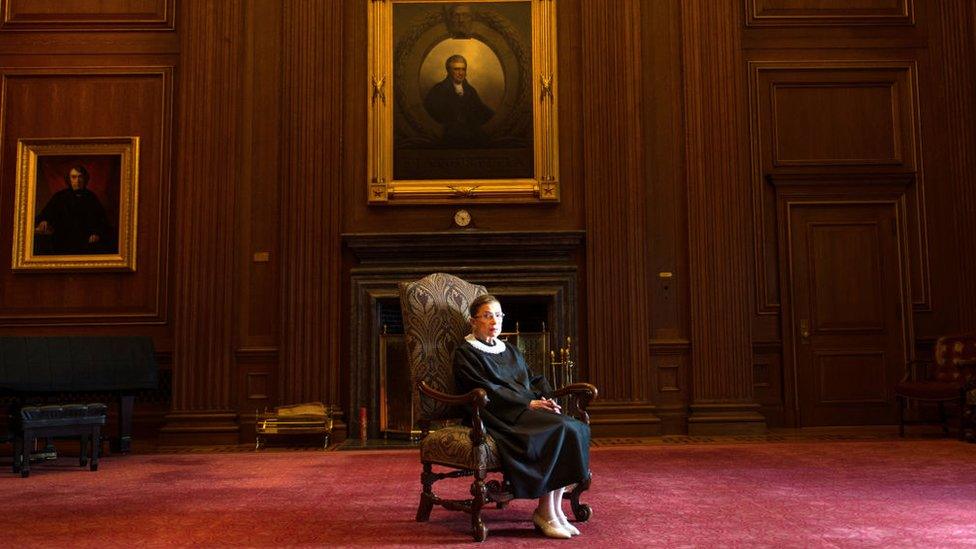
It worked: Ginsburg only missed oral arguments twice because of illness.
Ginsburg said she also followed the advice of opera singer Marilyn Horne, who was diagnosed with pancreatic cancer in 2005.
"She said, 'I will live,'" Ginsburg recalled to NPR. "Not that, 'I hope I live', or, 'I want to live', but, 'I will live.'"
Her longevity brought immense relief to liberal America, which fretted that another vacancy on the court would allow its conservative majority to become even more ascendant during the Trump era.
'The Notorious RBG'
Toward the end of her life, Ginsburg became a national icon. Due in part to her withering dissents, a young law student created a Tumblr account dedicated to Ginsburg called Notorious RBG - a nod to the late rapper The Notorious BIG.
The account introduced Ginsburg to a new generation of young feminists and propelled her to that rarest of distinctions for a judge: she became a cult figure.
The Notorious RBG was the subject of a documentary, an award-winning biopic and countless bestselling novels. She inspired Saturday Night Live skits and had her likeness plastered on mugs and T-shirts.
"It was beyond my wildest imagination that I would one day become the Notorious RBG," she said. "I am now 86 years old and yet people of all ages want to take their picture with me."
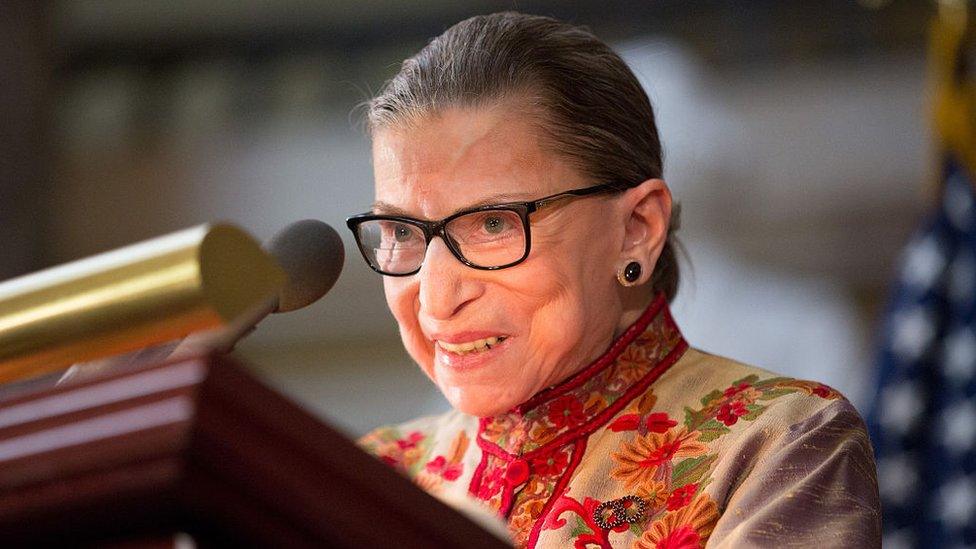
Every aspect of her life was dissected and mythologised, from her workout routine to her love of hair scrunchies.
Asked by NPR in 2019 if she had any regrets given the challenges she had faced in life, Ginsburg's supreme self-belief shone through.
"I do think I was born under a very bright star," she replied.
Reporting by Holly Honderich and Jessica Lussenhop